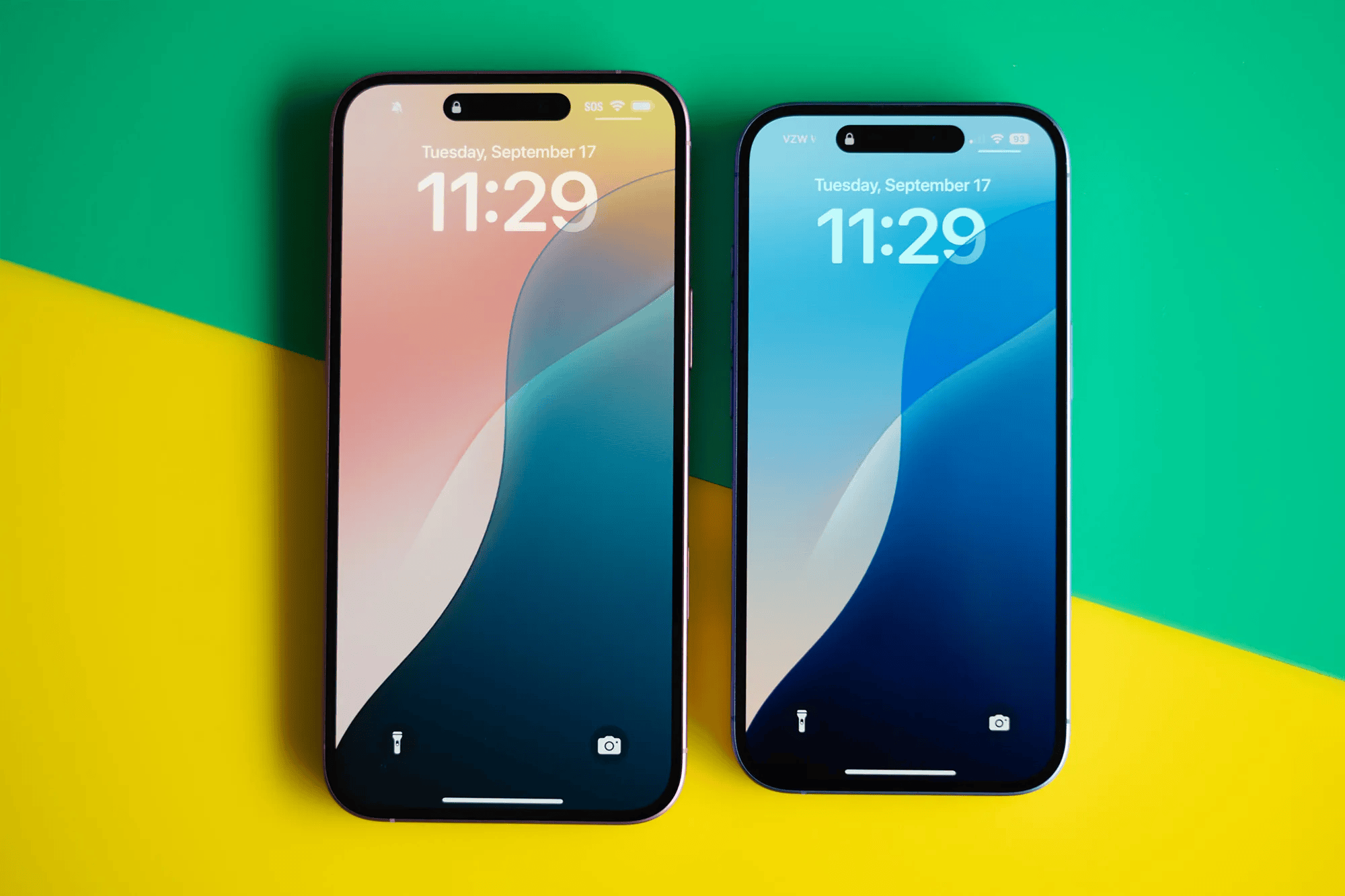
SIP vs VOIP: Differences, Similarities, and More
 Updated on
Updated on
 By Rob Marquez
By Rob Marquez
Rob Marquez
Originally from Southern California, Rob moved to Denver over 4 years ago to join the Ringy team as a Mobile Engineer. Rob received his BS and MS in C...
learn more
Rob Marquez
Originally from Southern California, Rob moved to Denver over 4 years ago to join the Ringy team as a Mobile Engineer. Rob received his BS and MS in C...
Table of Contents
Table of Contents
Enter the modern telecommunications world, where every phone conversation is a symphony of zeros. In this tech-savvy battleground, two warriors stand tall, ready to conquer the realm of voice communication: SIP and VoIP. We're here to unravel their mysteries and help you navigate the exciting world of telephony.
SIP, short for Session Initiation Protocol, and VoIP, the charming abbreviation for Voice over Internet Protocol, are two prominent technologies that have revolutionized how we make phone calls.
They offer cost-effective alternatives to traditional telephone systems and boast features that make your business communication soar higher than a seagull on a sunny day. But what sets them apart, and which one should you choose for your noble enterprise?
In this exhilarating exposé, we'll dive deep into the battle of SIP vs VoIP, comparing their strengths, weaknesses, and subtle nuances. We'll demystify the technical jargon, sprinkle in some witty banter, and provide you with all the knowledge you need to make an informed decision.
Are SIP and VoIP the Same?

While SIP and VoIP often work hand in hand, they are different. Think of them as a dynamic duo, each with its unique superpower. VoIP technology allows you to make voice calls over the internet instead of traditional telephone lines. It converts your voice into digital packets and sends them across cyberspace.
On the other hand, SIP is a communication protocol that helps establish and manage multimedia sessions, including voice, video, and instant messaging. SIP acts as the bridge between various communication endpoints, enabling seamless connectivity and allowing you to initiate and terminate sessions easily.
The significant difference between SIP and VoIP lies in their roles within the grand communication scheme. VoIP primarily focuses on transmitting voice signals over the internet, while SIP focuses on initiating and managing those sessions.
In simpler terms, VoIP is the method, the highway through which your voice travels, while SIP is the protocol, the language that devices speak to set up and control those voice sessions.
What is SIP?
SIP, or Session Initiation Protocol, is a communication protocol that sets the stage for multimedia sessions, including voice and video calls, instant messaging, and more. It acts as the behind-the-scenes maestro, orchestrating these sessions' initiation, modification, and termination. Think of SIP as the friendly host who invites your devices to join the communication party and ensures they can interact seamlessly.
The functionality of SIP goes beyond just making phone calls. It allows devices and applications to negotiate the parameters of a session, such as:
- Codecs for audio and video compression,
- Call duration, and
- Media characteristics.
This flexibility makes SIP highly adaptable to a wide range of communication scenarios. SIP can handle everything, whether you're:
- Chatting with a colleague on a softphone application,
- Participating in a video conference, or
- Connecting a traditional telephone to a VoIP network.
Imagine this: You're working remotely, sipping your favorite beverage, and decide to have a video conference with your team. You fire up your video conferencing application, and in the background, SIP takes charge. It establishes the connection between your device and your teammates' devices, negotiates the video and audio codecs to ensure the best quality, and allows you to have a productive virtual meeting, all thanks to the magic of SIP.
What is VoIP?
VoIP, or Voice over Internet Protocol, is a revolutionary technology that enables voice calls to be transmitted over the Internet instead of traditional phone lines. It takes your voice, converts it into digital data, and transports it as packets across the vast web of interconnected networks. VoIP is like the postal service of the digital era, delivering your voice messages as data packets to the recipient's device.
VoIP offers more than just basic phone call functions. It provides a wide range of features and applications. Imagine a virtual phone number that follows you wherever you go, whether traveling, working from home, or exploring a coffee shop. VoIP allows you flexibility, as your calls can be forwarded to any device connected to the internet.
Another exciting application of VoIP is its ability to integrate with other communication tools. You can seamlessly merge your voice calls with video conferencing, instant messaging and even collaborate on documents in real-time.
To put it into perspective, imagine you're an entrepreneur running a small business. With VoIP, a professional business phone number rings simultaneously on your office phone, smartphone, and laptop. You can even set up automated voicemail and call forwarding rules to ensure you never miss an important call, no matter where you are. VoIP empowers you to be connected and accessible, bringing convenience and efficiency to your entrepreneurial journey.
SIP vs VoIP: Similarities and Differences
Now, let's dive into the captivating world of the SIP vs VoIP face-off. Although SIP and VoIP are not synonymous, they share a deep connection. In fact, SIP is often used in conjunction with VoIP to establish and manage voice sessions. Below, we'll explore their similarities and differences through a comparison table:
| SIP |
VoIP |
| Communication protocol. |
|
| Initiates, modifies, and terminates multimedia sessions. |
Transmits voice calls over the internet. |
| Coordinates various communication endpoints. |
Converts voice into digital packets and delivers them. |
| Supports voice, video, and instant messaging. |
Offers additional features like call forwarding, voicemail, and conferencing. |
| Provides flexibility and interoperability. |
Offers cost-effectiveness and simplicity. |
| Example: Setting up a video conference call. |
Example: Making a phone call using a softphone app. |
While SIP focuses on session management and interoperability between different devices and platforms, VoIP concentrates on transmitting voice calls over the Internet. SIP acts as the master conductor, ensuring a smooth symphony of communication, while VoIP serves as the courier, delivering your voice with digital precision.
SIP vs VoIP: Pros and Cons

Before we jump into the pros and cons of SIP and VoIP individually, let's take a moment to appreciate their combined strengths. Both SIP and VoIP offer remarkable advantages over traditional telephony systems, such as:
- Cost savings,
- Scalability, and
- A wide array of features.
They bring flexibility, mobility, and enhanced communication capabilities to businesses and individuals alike. However, it's essential to consider their unique characteristics and potential drawbacks to make an informed decision. In the tables below, let's explore the pros and cons of SIP and VoIP individually.
SIP Pros and Cons:
| Pros |
Cons |
| Interoperability: Works with various devices and platforms, allowing seamless integration. |
Configuration Complexity: Setting up and managing SIP infrastructure may require technical expertise. |
| Flexibility: Supports multiple communication channels like voice, video, and instant messaging. |
Network Dependencies: Relies on a stable network connection for optimal performance. |
| Scalability: Easily expands to accommodate growing communication needs. |
Security Vulnerabilities: Requires robust security measures to protect against potential threats. |
| Cost-Effective: Reduces hardware and maintenance costs by leveraging existing infrastructure. |
Call Quality Variability: Call quality may be affected by network conditions and equipment used. |
| Rich Features: Offers advanced features like call forwarding, voicemail, and conferencing. |
Learning Curve: Requires training and understanding of SIP concepts for efficient usage. |
| Future-Proof: Supports evolving communication technologies and standards. |
Compatibility Challenges: You may encounter compatibility issues when connecting with legacy systems. |
With SIP pros and cons aside, let's look at the advantages and disadvantages of VoIP.
VoIP Pros and Cons:
| Pros |
Cons |
| Cost Savings: Drastically reduces long-distance and international calling expenses. |
Reliance on Internet Connection: A stable and high-quality internet connection is required for reliable voice transmission. |
| Mobility and Flexibility: Enables communication from any location with internet access. |
Emergency Services Limitations: Traditional emergency services with VoIP may not be readily available or accurate. |
| Versatility: Integrates with other communication tools like video conferencing and instant messaging. |
Power Dependency: VoIP service may be unavailable without backup power solutions during power outages. |
| Scalability: Easily scales to accommodate business growth without extensive infrastructure changes. |
Audio Quality Variations: Call quality may be influenced by internet congestion and network conditions. |
| Feature-Rich: Offers features like call forwarding, voicemail, and virtual phone numbers. |
Dependency on Service Providers: Quality and reliability depend on the chosen VoIP service provider. |
| Global Accessibility: Allows for international phone numbers and virtual offices. |
Limited Security: VoIP may be susceptible to security threats without proper security measures. |
By weighing these pros and cons, you can better assess which technology aligns with your requirements, budget, and infrastructure. SIP offers flexibility, interoperability, and rich features but requires careful configuration and network considerations.
VoIP brings cost savings, mobility, and versatility but relies heavily on internet connectivity and may have limitations with emergency services.
Remember, there is no one-size-fits-all solution, and understanding these pros and cons will help you make an informed decision that suits your unique communication needs and preferences.
How SIP Enhances VoIP: Expanding Communication Horizons

Let's assume you're a B2B company looking to collaborate seamlessly with your clients and colleagues across the globe. VoIP enables crystal-clear voice calls, ensuring that distance is no longer a barrier to effective communication. But SIP kicks it up a notch, offering a delightful medley of features that can take your collaboration game to new heights.
Here's more of how SIP enhances VoIP's capabilities.
1. Unified Communication and Collaboration (UC&C)
SIP empowers VoIP to become the cornerstone of Unified Communication and Collaboration solutions. It combines various communication channels like voice, video, instant messaging, presence, and more into a unified platform.
With SIP-enabled VoIP, businesses can seamlessly do the following:
- Transition from a voice call to a video conference,
- Initiate a chat session, or
- Share files.
This fosters efficient collaboration and enhances productivity.
Imagine a sales team using a SIP-enabled VoIP solution to engage in a video call with a potential client while simultaneously sharing sales presentations and documents. This combination of voice, video, and data exchange creates a dynamic communication experience that strengthens business relationships and streamlines workflows.
2. Rich Media Integration
SIP enables VoIP to embrace rich media integration, enriching communication experiences. Businesses can integrate VoIP with video conferencing systems, allowing participants to engage in face-to-face meetings regardless of location. This can foster stronger connections, enhance understanding, and save travel costs.
For instance, a multinational corporation utilizing a SIP-enhanced VoIP system can conduct global team meetings seamlessly, breaking down geographical barriers and fostering collaboration across borders.
3. Real-Time Collaboration
SIP, with its ability to initiate and manage multimedia sessions, enables real-time collaboration features in VoIP. Teams can engage in virtual meetings with shared whiteboards, real-time document editing, and screen-sharing capabilities. This enhances brainstorming, decision-making, and project collaboration.
A marketing agency, for example, can use a SIP-enabled VoIP system to collaborate on campaign strategies, simultaneously viewing and editing marketing materials and providing instant feedback, no matter where team members are located.
Here's the best part: Workplace collaboration and communication have been found to decrease employee turnover rates by 50%. Collaborating at work can also increase employee job satisfaction by an average of 17%. Moreover, workplace collaboration has significantly increased by at least 50% in the last two decades.
4. Integration with Business Applications
SIP enhances VoIP by enabling integration with business applications. VoIP systems can seamlessly connect with customer relationship management (CRM) software, help desk systems, and other business tools through APIs and integration capabilities. This integration allows for streamlined workflows, automated call logging, and improved customer experiences.
For instance, a call center using a SIP-enhanced VoIP solution can automatically retrieve customer information from the CRM system when a call is received, ensuring personalized and efficient interactions.
5. Scalability and Future-Proofing
SIP enhances VoIP by providing scalability and future-proofing capabilities. With SIP, businesses can easily expand their communication infrastructure as their needs grow, adding new users, devices, and locations without significant infrastructure changes.
This scalability ensures that VoIP solutions can accommodate evolving business requirements, making them a long-term investment. Moreover, SIP aligns with industry standards and evolving communication technologies, ensuring compatibility with future advancements and protecting businesses from technology obsolescence.
So, SIP serves as the magical ingredient that amplifies the power of VoIP. It enables businesses to go beyond traditional voice calling and embrace a comprehensive suite of communication tools. By leveraging the capabilities of SIP, you can create a collaborative environment where ideas flow freely, decisions are made swiftly, and productivity soars.
Should Your Business Use VoIP Only or SIP with VoIP?

Choosing between VoIP only or SIP with VoIP for your business can be akin to deciding between a plain cup of coffee or a decadent latte with extra foam and sprinkles. While both options can satisfy your communication cravings, it's essential to consider a few factors before making a decision.
Here are the factors to consider in detail.
1. Communication Needs
Start by assessing your business's communication needs. Are you primarily focused on voice calls, or do you require a more comprehensive suite of communication channels like video, messaging, and collaboration tools? If your business relies heavily on voice calls and has minimal requirements beyond that, VoIP-only may suffice.
However, if you're looking for a robust and versatile communication solution that can accommodate various channels and collaboration features, SIP with VoIP is your caffeinated concoction.
Let's assume you want to seamlessly switch between voice calls, video conferences, and instant messaging while collaborating on creative projects. SIP with VoIP would provide the perfect blend of capabilities to meet your diverse communication needs.
2. Scalability and Future Growth
If you anticipate rapid expansion or frequent changes in your communication infrastructure, SIP with VoIP offers the flexibility and scalability to adapt to your evolving needs. As your business grows, SIP allows you to seamlessly add users, devices, and locations, ensuring a smooth and scalable communication environment.
On the other hand, if you have a small business with stable communication requirements and minimal growth projections, VoIP-only might be a simpler and more cost-effective choice.
3. Integration with Existing Systems
Evaluate your existing business systems and consider the need for integration. If your business heavily relies on specific applications like CRM, help desk, or productivity tools, SIP with VoIP can offer integration capabilities, allowing seamless communication and data exchange between different systems.
For instance, a sales team that relies on a CRM system can benefit from SIP's ability to integrate VoIP with their CRM platform, enabling automatic call logging, screen pops with customer information, and enhanced call routing based on customer data.
4. Technical Expertise and Management
SIP with VoIP solutions often requires more technical expertise to set up and maintain, as it involves configuring and managing SIP infrastructure. If you have an IT team with the necessary skills or the willingness to invest in training, SIP with VoIP can provide unparalleled flexibility and control.
However, if you prefer a more straightforward approach with minimal configuration and management, VoIP-only may be your go-to option.
5. Budget and Cost Considerations
Last but certainly not least, evaluate your budget and cost considerations. SIP with VoIP solutions typically requires additional infrastructure, equipment, and potential ongoing maintenance investments.
While the enhanced features and capabilities can justify the added costs, weighing the financial impact is crucial. VoIP-only can offer a cost-effective communication solution for smaller businesses with limited budgets without compromising essential voice-calling capabilities.
However, for businesses with greater financial bandwidth and a focus on advanced communication features, SIP with VoIP can be a worthwhile investment, like treating yourself to a premium, handcrafted coffee experience.
By carefully considering these factors, you can decide whether your business should opt for VoIP only or sip on the delicious combination of SIP with VoIP. Remember, just like coffee preferences vary, so do communication needs, and finding the perfect blend is essential to ensure your business stays energized and connected.
Caffeinated Note: While the decision ultimately depends on your unique business requirements, there is no denying the power of SIP with VoIP's versatility and flexibility in providing an extensive range of communication capabilities.
VoIP vs SIP FAQs
Have some more burning questions about SIP and VoIP? We've got you covered with frequently asked questions to quench your thirst for knowledge.
Is SIP required for VoIP?
No, SIP is not necessarily required for VoIP. While SIP plays a significant role in enabling advanced communication features and interoperability, it is just one of several protocols that can be used for VoIP.
Other protocols like H.323 and MGCP (Media Gateway Control Protocol) also exist. However, SIP has gained widespread adoption and is commonly used due to its flexibility, scalability, and rich features.
Which is Better, SIP or VoIP?
In essence, SIP and VoIP complement each other. SIP provides the framework for initiating and managing communication sessions, while VoIP handles the transmission of voice data. Both have their strengths and serve different purposes within modern telephony.
So, it's not a matter of one being better than the other but how they work together to enhance communication capabilities.
What is the Difference Between SIP Server and VoIP Server?
In SIP and VoIP, the terms "SIP server" and "VoIP server" are often used interchangeably, leading to confusion. However, there is a subtle difference between the two.
SIP and VoIP differ mainly in their support of multimedia. While VoIP is limited to voice messages only, SIP can send and receive images and videos.
Additionally, SIP enables individual users' systems to handle most of the processing work instead of relying on a central VoIP server.
Conclusion
When considering whether your business should opt for VoIP only or SIP with VoIP, evaluating the factors we discussed earlier is crucial. Understanding these considerations will help you make an informed decision that aligns with your unique business requirements.
But why stop there? Take your communication game to the next level with a full-suite CRM like Ringy, featuring a cloud VoIP softphone. Our CRM integrates your communication channels, customer data, and workflows into one comprehensive platform. This integration allows you to enhance business operations, improve customer experiences, and streamline communication processes.
Ringy CRM's cloud VoIP softphone ensures you can communicate with your customers anytime, anywhere, and on any device, providing the flexibility and mobility essential for today's businesses. Give it a try today!

Skyrocket your sales with the CRM that does it all.
Calling? Check. SMS? Check. Automation and AI? Check. Effortlessly keep in touch with your customers and boost your revenue without limits.

Take your sales to new heights with Ringy.
Sales in a slump? Ringy gives you the tools and flexibility you need to capture leads, engage with them, and turn them into customers.
Subscribe to Our Blog
Enter your email to get the latest updates sent straight to your inbox!
Categories
Related Articles















.jpg)


.jpg)
.jpg)













































